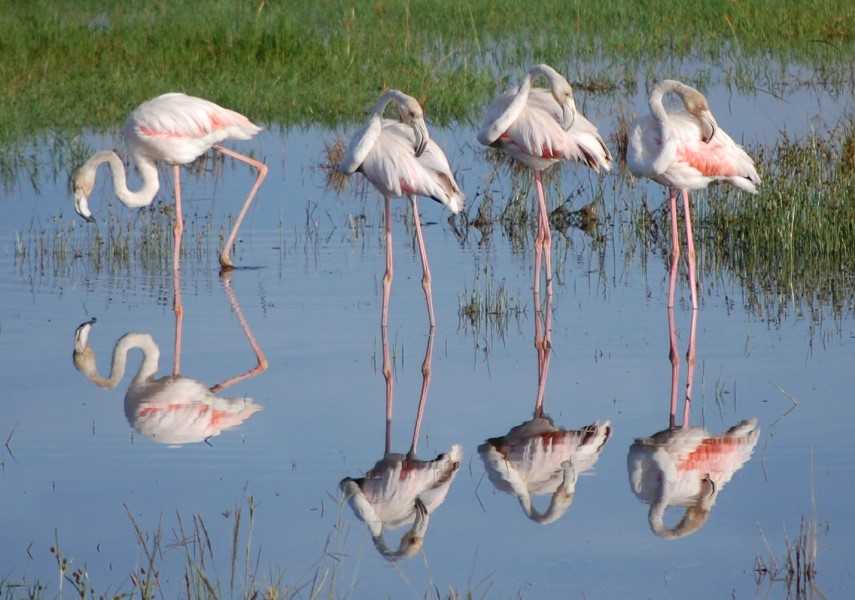Lake Nakuru National Park safari is located in the rift valley of Kenya. This area facilitated the creation of the rift valley soda lakes and Lake Nakuru is one of those lakes.
A soda lake is a natural phenomenon that is ideal for the production of algae. Therefore, this shallow lake is a gathering point for millions of flamingos throughout the year. However, Lake Nakuru safari is also the natural habitat for other African wildlife such as giraffes, black rhinos, white rhinos, plus many other species.
Starting Point Lake Nakuru Safari
We amused ourselves observing the baboons at the park entrance while our safari guide spoke with the park rangers and acquired our permits. Indeed, the baboons can get quite aggressive especially if they think you have food. Fortunately, we did not have any food!
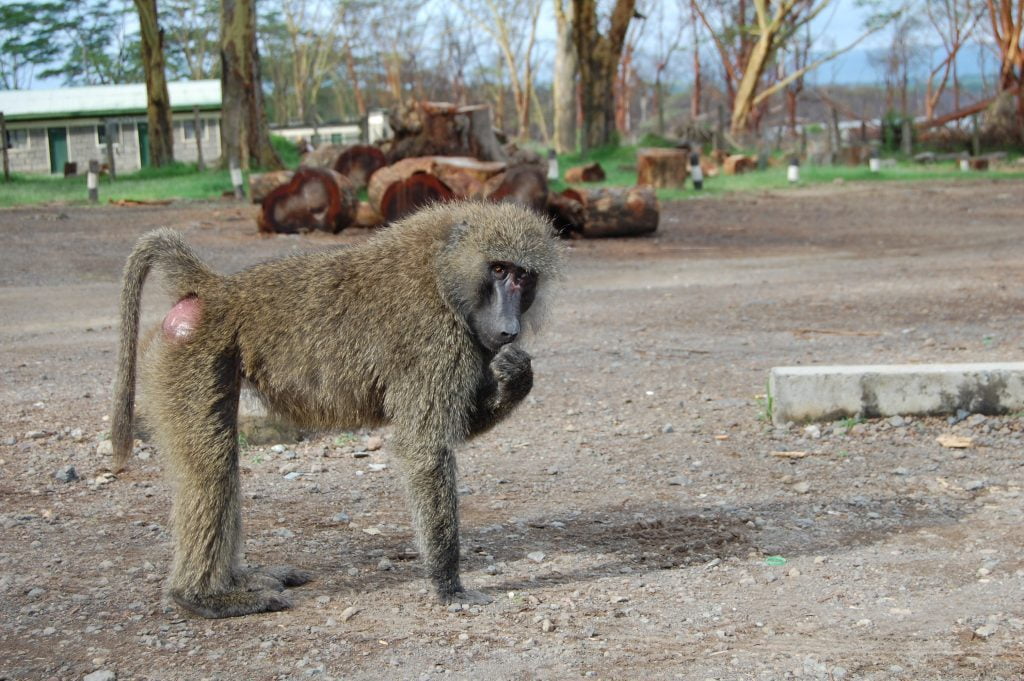
After passing through the park entrance our guide informed us that the park rangers had warned him that certain sections of the road were flooded. Therefore, improvisation would be necessary to reach our overnight accommodation inside the park.
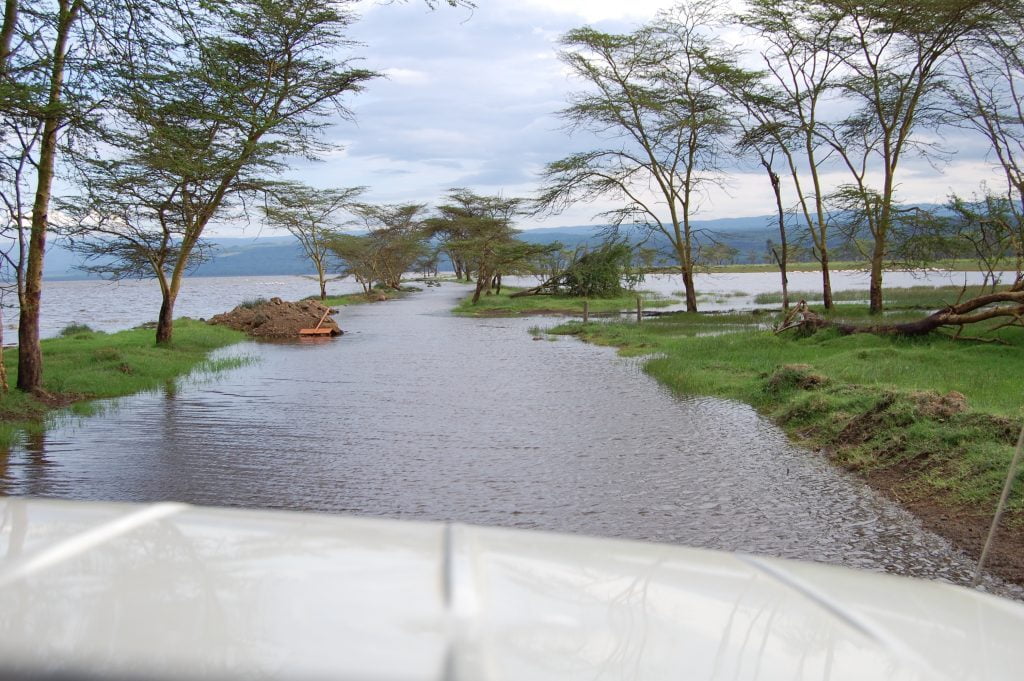
However, improvisation was not a problem for our rock star safari guide. We had just traveled from Maasai Mara where he had delivered an action packed safari adventure. As a result, he quickly devised a work around plan to get to the lodge. Indeed, he had worked in this area for decades and therefore we traveled off road through the bush. Plus, we would have some fun along the way.
Baby Giraffe with Mother
Lake Nakuru National Park safari sometimes requires traveling off road. As a result, we went through some pristine woodlands that we normally would not have traveled through. This created some unique wildlife viewing opportunities. We soon discovered a baby giraffe and its mother. I have come across many giraffes on safari, but never a baby giraffe.
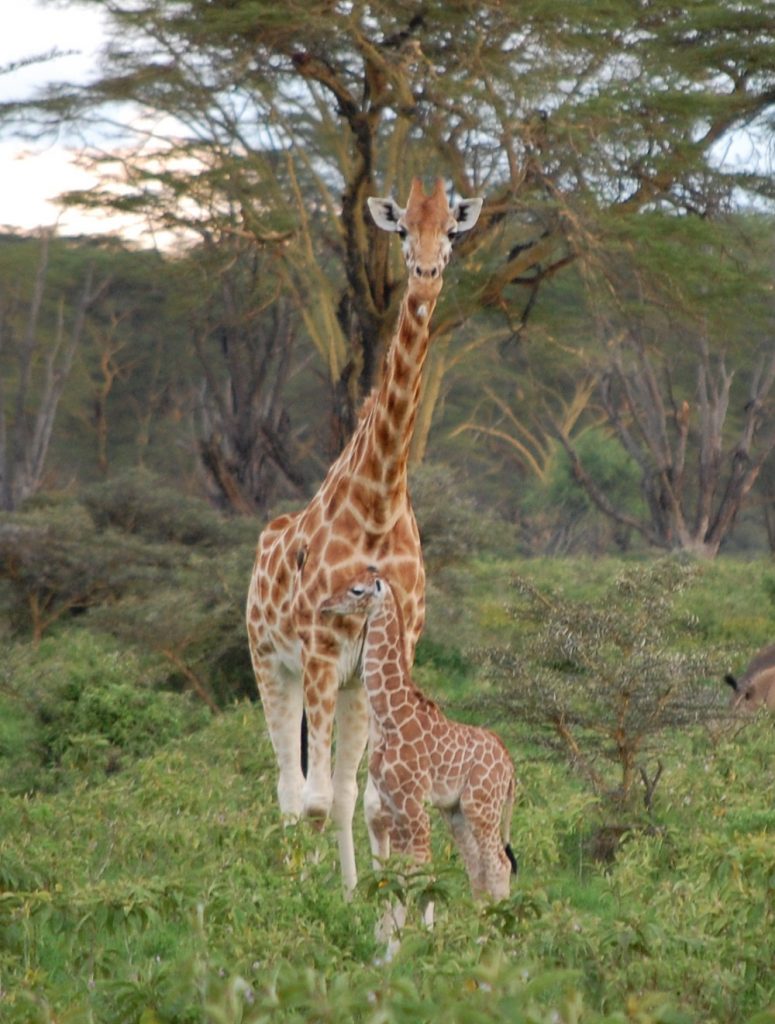
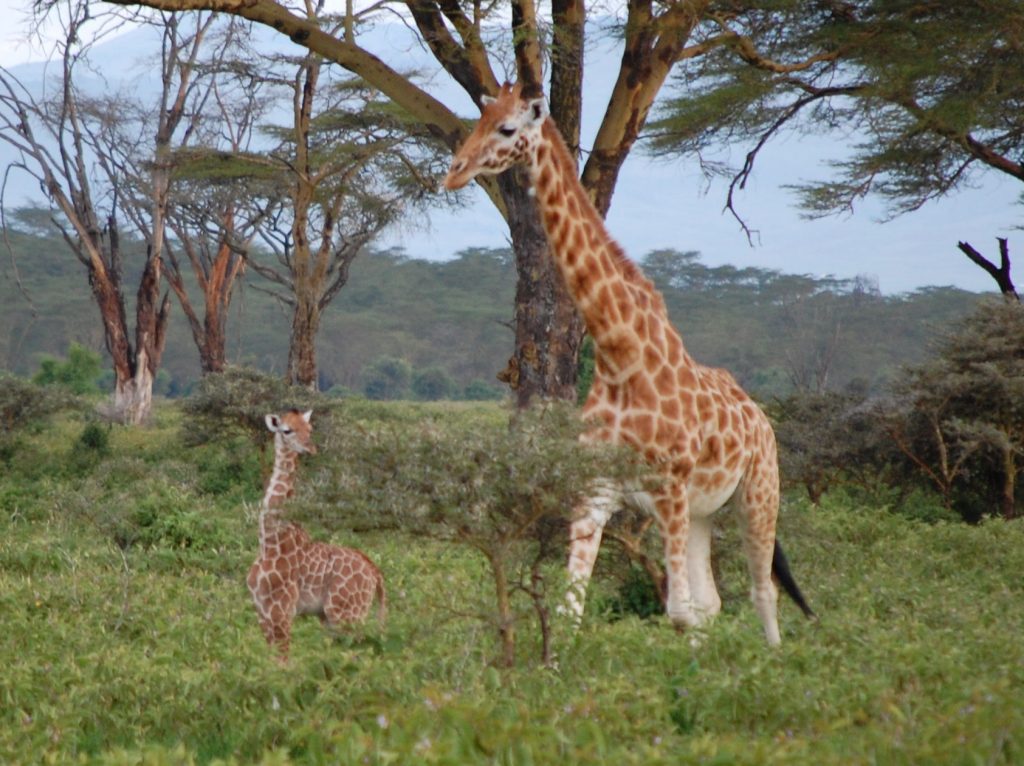

Family of White Rhinos
Next, we would be very fortunate and come across a family of white rhinos. The white rhinos are endemic to the local ecosystem in contrast with the black rhino that was introduced. There are limited numbers of rhinoceros located here, with approximately 75 white rhinos and 25 black rhinos.
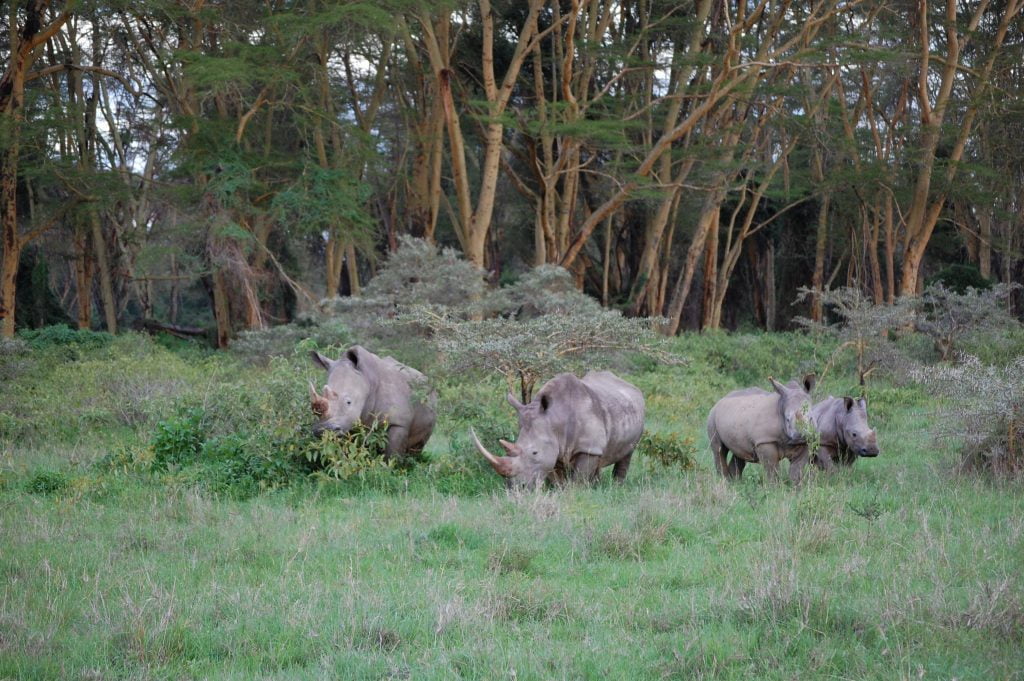
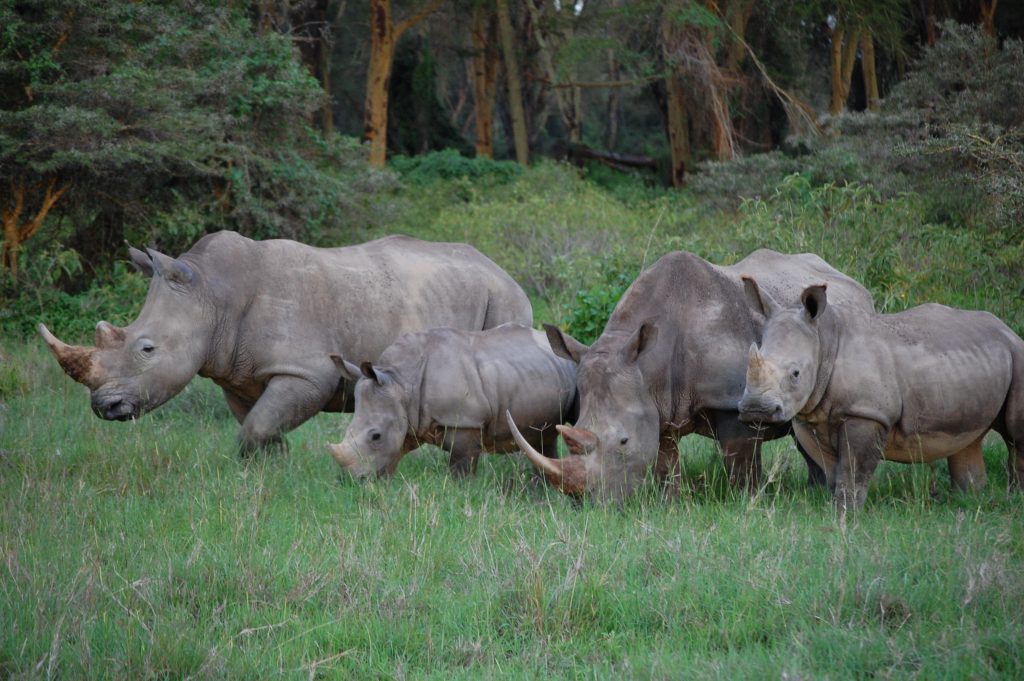
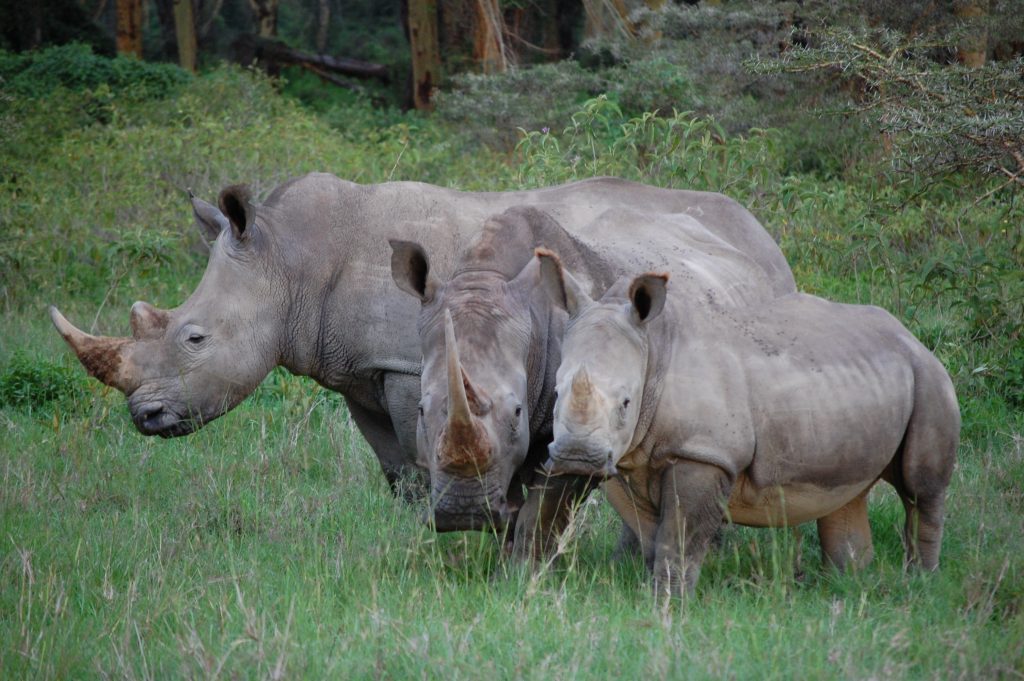
The white rhinos are predominantly grazers and they are characterized by broad mouths which they use to feed on grass. In contrast, the black rhinos have a more narrow mouth and prefer to feed on leaves and shrubs.
The white rhinos also typically have a longer front horn and tend to be a bit slower moving than the black rhinos. Additionally, the ears of the black rhino are noticeably different.
Critically Endangered Black Rhinos
The next day while we were out on safari we would come across the black rhinos that live in the park. Here are a some photos of the black rhinos to compare and contrast.
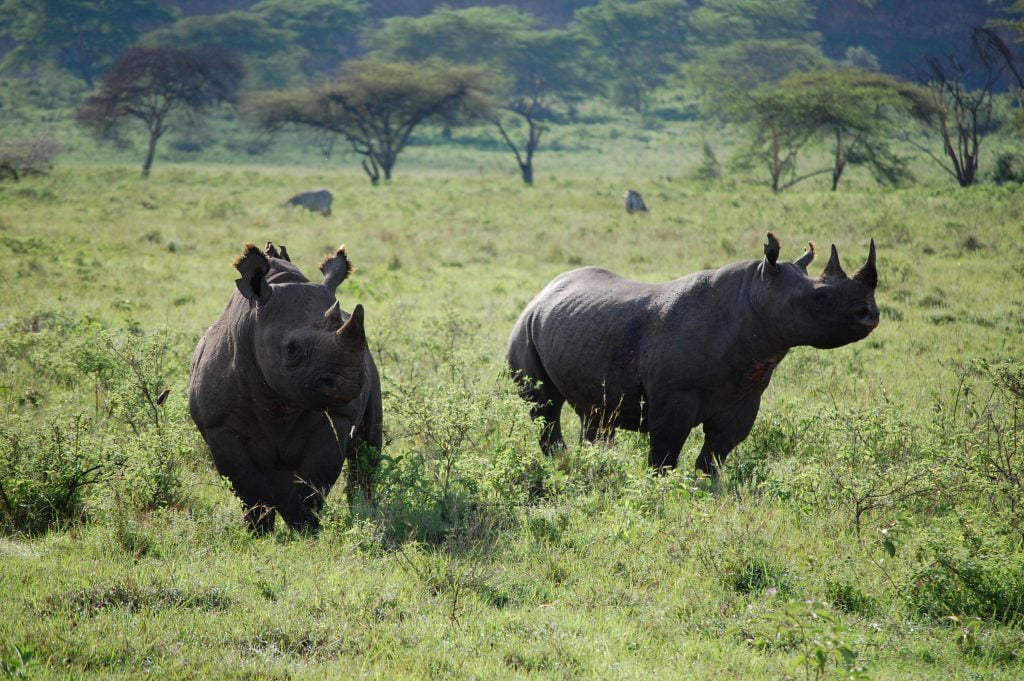
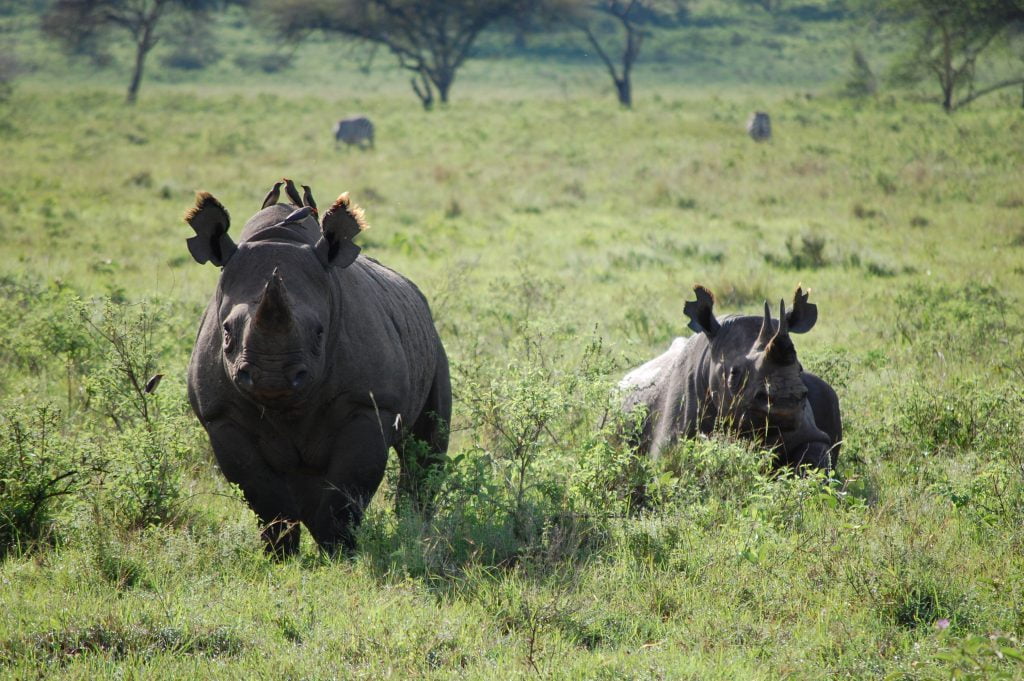
Lake Nakuru Flamingos
A flamingo and the African buffalo certainly make for an odd comparison. This is because the former is perfectly elegant and the latter is perfectly sloppy. However, the contrast can create nice photo opportunities.
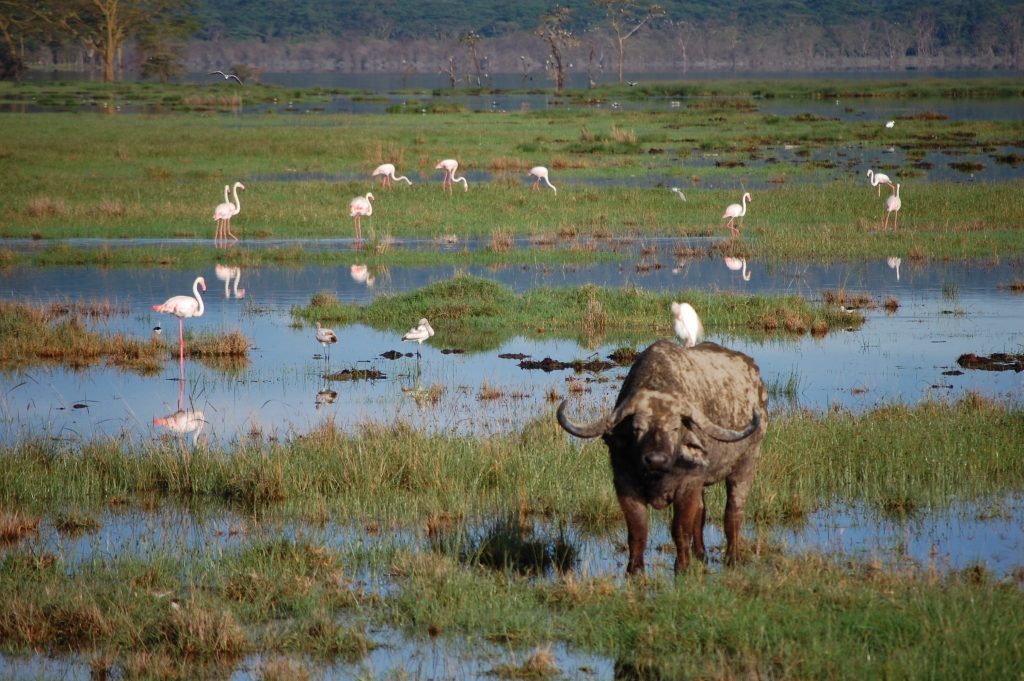

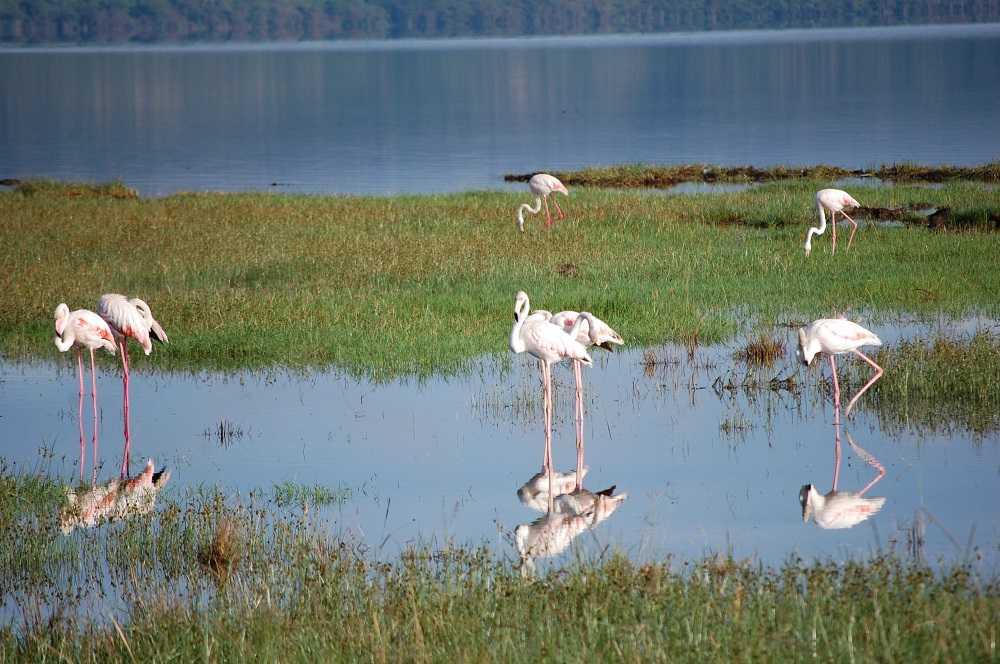
Baboon Cliffs Overlook Lake Nakuru
Overlooking Lake Nakuru is a high vantage point that sits atop the Baboon Cliffs. This is an ideal location to observe Lake Nakuru when the flamingo flock is numbered in the millions. Unfortunately, large numbers of flamingos do not like to visit the lake when the water levels are this high.
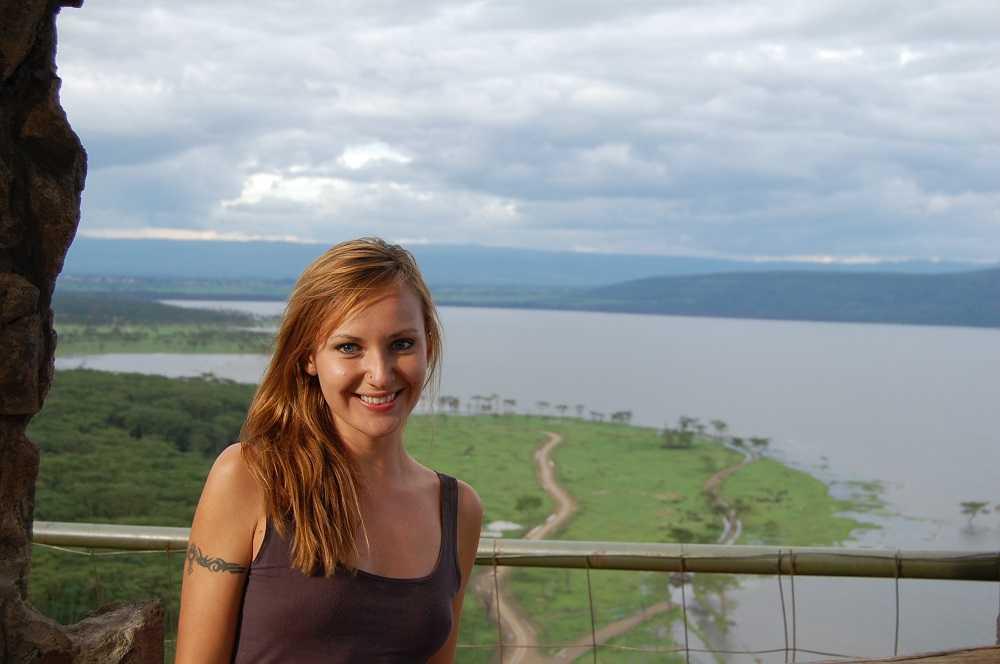
Lake Nakuru Safari Summary
Lake Nakuru Lodge is situated on a hill in the center of the park and it has sweeping views of the area. As a result, this view was very impressive and the villas were also quite nice. However, there were some encounters with “security” that make me hesitate to recommend this place.
The aforementioned issues with lodge security notwithstanding, we had a great time on our Lake Nakuru safari. Indeed, our guide had once again given us a great safari adventure. I was certainly going to give him nice tip when we got back to Nairobi. The next day we were going to spend the morning at Lake Naivasha National Park.

